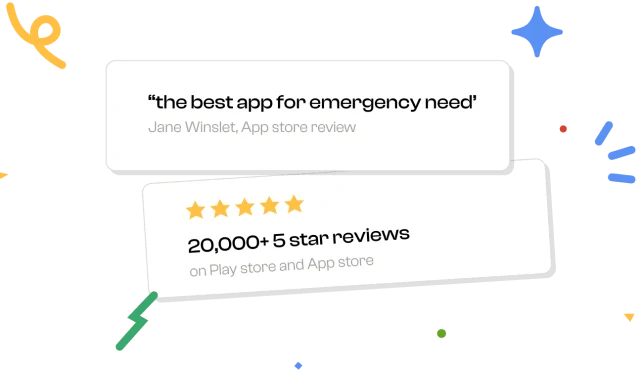A car insurance deductible is the amount of money that a policyholder is responsible for paying “out-of-pocket” before their insurance coverage kicks in to cover the leftover cost of a claim.
In any unfortunate event, you may need an adequate amount of insurance coverage that can protect you against any financial losses. But when it comes to protection, we have an idea about the higher insurance premium. Although you can still save money on your insurance by going for higher or lower deductibles according to your risk factors.
For example, if a policyholder gets into an accident that causes $3,000 worth of damage to repair the vehicle. In such an instance if the policyholder has a $1000 deductible, then they will have to pay the initial $1000, and the remaining $2000 would get covered by the insurance company. Beem, America’s first Al-powered Smart Wallet App, is here to resolve all your doubts about car insurance deductible.
What Are Deductibles In Car Insurance?
Deductibles are generally set while purchasing the policy, and the amount varies depending on the policyholder’s preference. Typically the more the deductible amount, the less will be the insurance premium.
Although it’s crucial to pick the car insurance deductible amount that the policyholder can afford to pay in the event of a claim. The deductibles can be set in two formats, either in a fixed dollar amount or a percentage of the total claim amount.
How Does Car Insurance Deductible Work?
Let’s say you get into an accident. While you have a $500 deductible, the accident causes $2000 worth of damage to your vehicle. So, even when you file a claim with your insurance company, you’ll still be first responsible to pay $500. The remaining $1500 will be paid by your insurance carrier.
Unlike health insurance, there are no fixed annual deductibles to meet when it comes to car insurance, it will be applied every time you file a claim.
The most common type of coverage it includes is the comprehensive and collision. You’ll be required to select deductibles for each of them. You can also have deductibles for personal injury protection and uninsured/underinsured motorist property damage in some states. The higher the deductible, the lower will be the annual or monthly insurance premiums, and vice versa.
What If Your Car Insurance Deductible Cost More Than Repairs?
If your car insurance deductible is higher than the cost of the damage to the vehicle, then you can’t file the claim and you’ll have to pay for the entire amount out of pocket. This happens because the insurance companies only cover damages above your deductible amount.
For example, in an incident, the damage to the vehicle costs $500 and your deductible is $1,000, then you will be required to pay for the repairs out of your own pocket because the cost is lower than your deductible amount.
How To Choose Car Insurance Deductible
In most instances, you have the right to choose the deductible amount for each of the coverage types. But there are factors you need to consider before making a decision. Some of them include:
- The amount you’ll be responsible to pay during various incidents. Choose the amount that comes under your risk-taking ability and you’re comfortable paying out of your pocket if you need to file a claim. High deductibles mean you’ll be asked to pay more out of your pocket in case of damage or repair, and it can also lower your insurance premiums.
- The deductible amount will have an impact on your insurance premiums. So, compare and identify how the deductible amount impacts your overall policy premium. Hence, if you choose to pay a low deductible amount, you’ll be required to pay a higher insurance premium for the coverage and vice versa.
- Value of your car, including the age and condition of your vehicle. For some older car models, the total cost of coverages that have deductibles ends up costing more in insurance premiums than its actual worth.
- The requirement of your lender is an important factor to consider. If you take a car on loan or lease, the lender sometimes requires you to have full coverage car insurance. Even in some cases, a specific deductible amount is until the loan is paid.
Picking Low Deductible
If you don’t want to incur a large out-of-pocket cost during claims, then the lower deductible will be the best option as it costs less for each claim and helps in saving a lot of money in the long run.
Picking High Deductible
If you file a claim, you’ll be required to pay more for deductibles. However, it also provides you with the benefit to enjoy lower premiums. So, if you have a higher risk-taking ability and can financially handle the amount of the deductible, a higher deductible can be the best option for you.
What Happens When There’s No Deductible
Such an instance may happen when another driver files a claim against your liability coverage. You select a disappearing deductible after a certain policy period and end up with $0 deductible comprehensive or collision claims. It also allows you to have free repairs on glass claims in some states.
Types Of Car Insurance Coverages
Almost every state requires basic car insurance coverage. Noting that you must have a minimum limit, you can always choose to higher the limits that fit your policy needs.
Liability Coverages
This type of insurance includes coverage for bodily injury or property damage. It also protects you if you’re involved in at-fault accidents that cause injury or damage to another person’s property.
Uninsured/Underinsured Motorist Coverage
Uninsured coverage protects you when you get into an accident with someone who doesn’t have liability insurance. Underinsured motorist coverage, on the other hand, helps protect you when the other person involved in an accident doesn’t have enough insurance to pay for your damages.
Personal injury protection Coverage
It assists with medical expenses for you, your relatives and probably passengers involved in an accident. Each state has different rules about who and what is covered under this coverage.
Collision Coverage
You can use this kind of coverage whether you’re at fault or not. It helps you repair your car when it gets hit by another vehicle or object
Comprehensive Coverage
It provides coverage to your vehicle in the event of theft or vandalism. It can also help with losses during natural disasters, floods, hail and when you hit an animal.
Conclusion
Choosing the right car insurance deductible according to your risk ability can take time and consideration. You can consider having a proper conversation with a specialized insurance agent. A professional can help you make the best decision based on your driving record, credit record and financial planning goals.


























